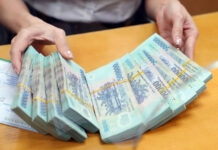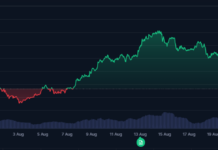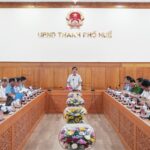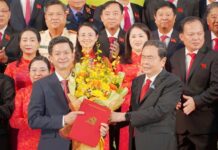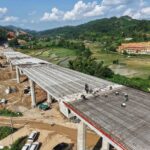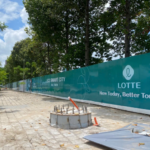“Seed Capital” for Public Investment
Mr. Phan Hữu Duy Quốc, Chairman of the Board of Directors of Construction Corporation No. 1 (CC1), stated that many construction companies are rushing to complete major projects such as the North-South Expressway, Long Thành Airport, and Đồng Hới T1 Station. These are key projects directly overseen by the Prime Minister. However, Mr. Quốc noted, “Private investment momentum is severely constrained. In Ho Chi Minh City, construction cranes are almost nowhere to be seen. This indicates a significant decline in new construction projects, primarily due to legal bottlenecks.”
A bright spot is the draft administrative reform proposing the issuance of construction permits within one week. If implemented, this would significantly boost private capital flow. Yet, public investment disbursement remains a concern. Some projects scheduled for bidding in July are still uncertain about opening bids by September. “Mechanisms are needed to ensure leadership changes do not disrupt project timelines,” Mr. Quốc emphasized.
At the 3rd Vietnam Economic Forum 2025, themed “Drivers for 8.3-8.5% GDP Growth,” held in Ho Chi Minh City, Prof. Dr. Hoàng Văn Cường, Member of the National Assembly’s Economic and Financial Committee, affirmed that public investment acts as “seed capital” to attract private investment, thereby driving overall societal investment. “When the government invests, it builds trust and expectations, drawing in other investors. Currently, about 2,200 projects totaling 6 million billion VND are stalled. Resolving these issues would immediately inject this massive resource into the economy,” Mr. Cường observed.
However, Mr. Cường stressed that disbursement should be selective to avoid inflationary pressures. The solution lies in targeted reforms, reactivating dormant capital for sustainable economic growth. Infrastructure development, particularly expressways and seaports, if completed on schedule, would create a ripple effect, positioning Vietnam as a regional logistics hub.
Mr. Nguyễn Hữu Nam, Deputy Director of the Vietnam Chamber of Commerce and Industry (VCCI) – Ho Chi Minh City Branch, highlighted two major challenges for businesses: non-interconnected data across agencies and cumbersome post-merger procedures. He stated, “The two most practical supports businesses expect from the government are substantive administrative reforms, data integration, and reducing logistics costs, currently exceeding 15%.”
Experts noted that while Ho Chi Minh City achieved 7.5% growth in the first half of the year, to meet the national 8.3-8.5% target, the city must grow above 10.5%. This is an immense challenge, achievable only by unlocking both public and private investment, accelerating progress while ensuring sustainable resource management.
Challenges in Export Markets
In the first eight months, seafood exports reached USD 7.3 billion, up 17% year-on-year. Ms. Tô Thị Tường Lan, Deputy Secretary-General of the Vietnam Association of Seafood Exporters and Producers (VASEP), forecasted the industry could hit USD 10 billion for the year. However, she noted that exports to the U.S. dropped to second place, overtaken by China. From January 1, 2026, key products like crabs, tuna, and mackerel will be barred from the U.S. due to new regulations. Anti-dumping duties on shrimp exceed 55%, posing a clear risk of losing the U.S. market entirely.
The textile industry saw eight-month exports of USD 30.7 billion. Mr. Trần Như Tùng, Vice Chairman of the Vietnam Textile and Apparel Association (VITAS), analyzed, “While the first half grew 10%, by August, growth slowed to 7%. U.S. buyers rushed imports before April 1 to benefit from old tariffs, leading to high inventories. From Q3, demand plummeted, slowing exports.”
The wood industry faces similar challenges. Exports reached USD 11.1 billion, up 6.5% year-on-year, but Mr. Phùng Quốc Mẫn, Chairman of the Ho Chi Minh City Handicraft and Wood Industry Association (HAWA), noted this growth occurred despite significant barriers like anti-dumping investigations, U.S. countervailing duties, and EU deforestation regulations. These obstacles have hindered export performance.
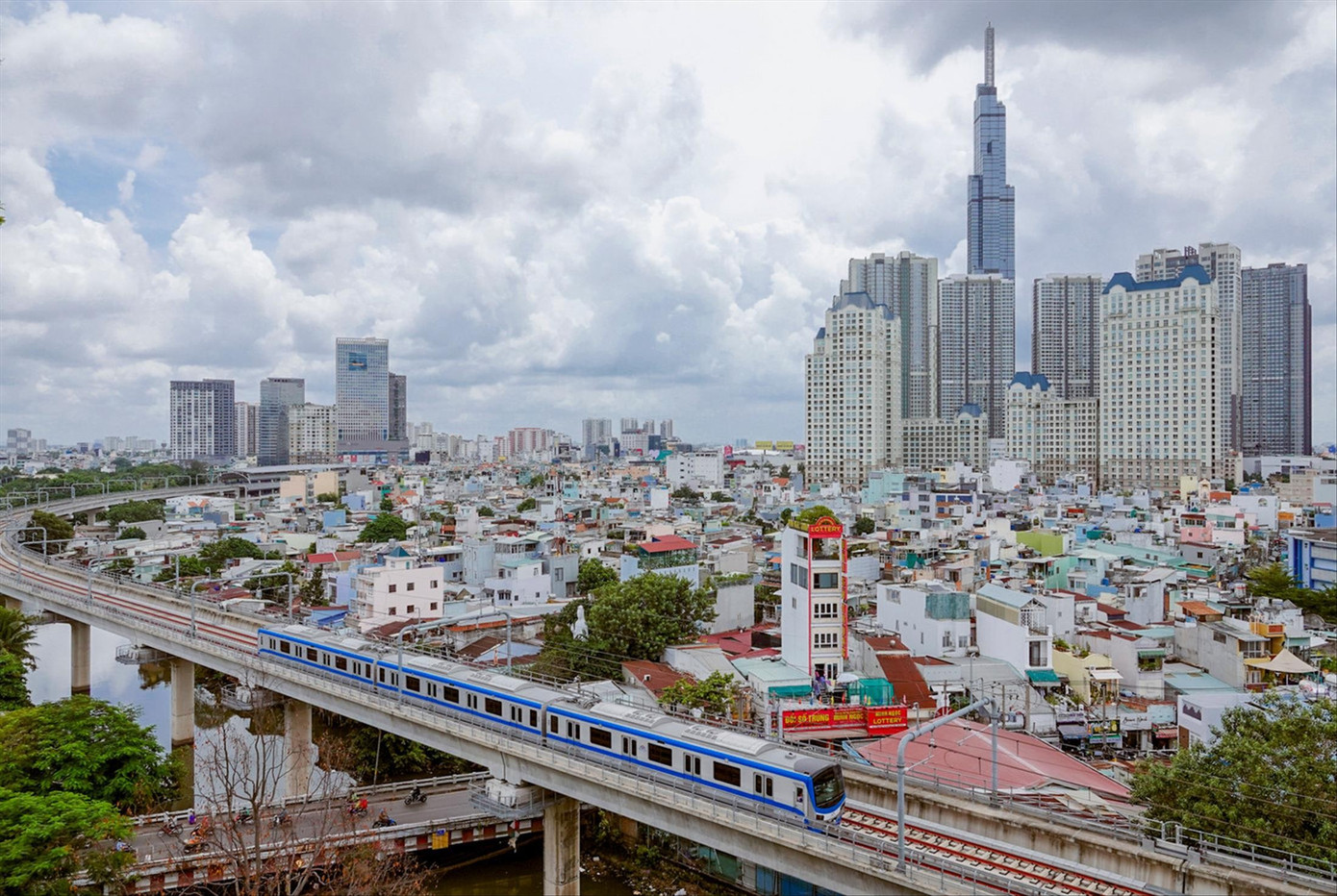
Ho Chi Minh City is developing transport infrastructure projects (pictured: Bến Thành – Suối Tiên Metro Line). Photo: Duy Anh
To boost exports, Ms. Nguyễn Cẩm Trang, Deputy Director of the Import-Export Department (Ministry of Industry and Trade), advocated for synchronized solutions across supply, demand, and export organization. “Economic diplomacy must remain pivotal, connecting businesses and expanding into new markets like the Middle East and South America. However, CPTPP rules of origin, especially the ‘from yarn forward’ requirement for textiles, are critical bottlenecks. Without cumulative mechanisms or adjustments, businesses will struggle to leverage advantages,” Ms. Trang explained.
New Momentum from Institutional Reform
Dr. Cấn Văn Lực, Chief Economist at BIDV, reported that over the past eight months, consumer demand rebounded, FDI remained robust, and services, tourism, and logistics grew. A notable driver is the rise of the digital economy, green economy, circular economy, and energy transition. These will be key to enhancing Vietnam’s global value chain position. “It’s time to develop a National Productivity Enhancement Program, linked to high-quality workforce training and innovation-encouraging environments. A National Productivity Committee should be established for coordination and oversight. Concurrently, a national database must be built and utilized as a foundation for sustainable growth,” Mr. Lực proposed.
Dr. Trần Du Lịch emphasized that, in the current context, the most critical factor is rebuilding market and business confidence. As the Party, State, and Government have repeatedly stressed, to unlock economic flow, institutional bottlenecks must be removed—“unblocking the blocks of the blocked.” “I believe the Government’s push for transport infrastructure projects is pivotal, as infrastructure not only reduces logistics costs but also enhances business competitiveness, laying the groundwork for long-term development.”
Mr. Nguyễn Anh Tuấn, Deputy Director of the Institute for Economic and Financial Policy Research, commented, “Fiscal and monetary policies have coordinated smoothly in 2025. Monetary policy quickly impacts credit and consumption, while fiscal policy has a longer lag but broader investment reach. Going forward, flexible use of these tools will be essential to maintaining macro stability and driving long-term growth.”
Mr. Nguyễn Phi Lân, Director of the Forecasting, Statistics, and Monetary Stability Department at the State Bank of Vietnam, shared that as of September 10, the average lending rate for new transactions by commercial banks was 6.52%/year, down 0.41 percentage points from late 2024. This enables businesses and individuals to access lower-cost capital for investment, exports, and consumption—key economic drivers. “Moving forward, the State Bank will continue proactive, flexible, and effective monetary policy management, closely coordinating with fiscal and other policies to promote economic growth, stabilize the macroeconomy, and control inflation,” Mr. Lân stated.
Ho Chi Minh City and Tay Ninh Explore Dredging Saigon River for Sand to Construct Ring Road 4
Ho Chi Minh City and Tay Ninh Province have agreed to jointly study the dredging of the Saigon River, aiming to harness its sand resources for the construction of Ring Road 4, slated to begin in 2026.
Dr. Can Van Luc: State Bank’s Monetary Policy Room Extremely Limited, Further Interest Rate Cuts Pose Significant Risks
According to this expert, further reducing interest rates would be perilous due to concerns over “currency outflows,” not to mention the potential strain on the money supply and inflation dynamics.






